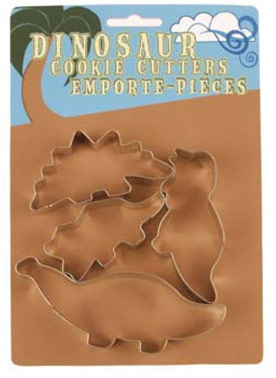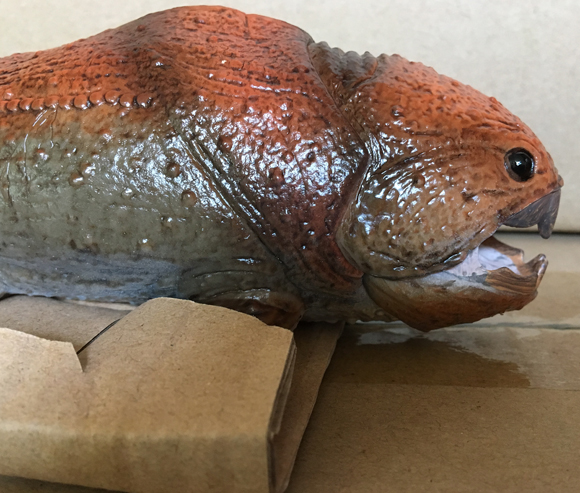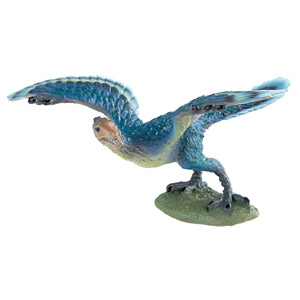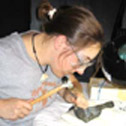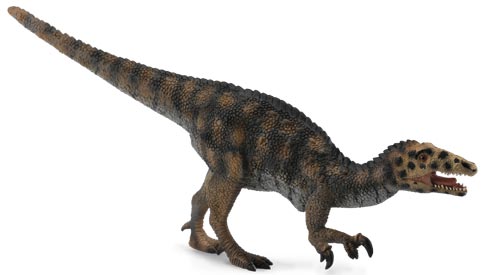New Dinosaur Quarry unveiled – a chance to meet up with old Friends
An expedition hoping to find specimens for a Chicago museum have hit the jackpot with the discovery of a vast number of jumbled up dinosaur bones in an ancient river system outside of Hanksville, Utah in the USA.
The researchers, representing the Burpee Museum of Natural History, had been hoping to find specimens for the museum’s new display centre which is currently under construction. This new discovery will give them plenty of options, as so far, six types of dinosaur have been identified along with a number of other important finds that provide a detailed picture of the western North American landscape in the late Jurassic.
It seems the team have uncovered a “log jam”, a series of fossils that represent the aftermath of a single flood event (or perhaps numerous floods), with drowned animals being washed down stream and ending up in part of a river system with more flood debris including trees and other plant material. The site is then gradually covered over with sediments and preserved as fossils, providing a remarkable insight into the fauna and flora of this part of the world approximately 148 million years ago.
Dinosaur “Log Jam”
These “log jams” can provide palaeontologists with a tremendous amount of information about a particular ecosystem, as a vast amount of fossil material is uncovered. This new site includes numerous dinosaur remains, some of the bones are articulated but the majority are scattered and jumbled up. Amongst the fossil bones are the fossilised remains of conifers, so well preserved that the texture of the bark can still be made out along with growth rings on the broken branches and trunks. These pieces probably created a natural dam which enabled the collection of all the carcases of animals caught in the floods to be washed up together in the same area. Dendrochronologists (scientists who study the growth rings of timber), should be able to obtain climate data from the fossilised wood. Wide growth rings followed by narrow growth rings would indicate distinct seasons, such as a wet season with rapid growth followed by a dry season with limited tree growth. This site could help provide further information on life in the Late Jurassic (Tithonian faunal stage).
These log jam sites are very important to palaeontologists, because of the wealth of data they contain, although such finds are rare, when they do occur they permit scientists a unique access to ancient worlds.
To read about the discovery of a similar site (but dating from the Cretaceous period), in Argentina: Giant Dinosaur Discovered in Cretaceous “Lost World”.
This new quarry is within the Dinosaur National Monument Park, an area protected by the U.S. National Parks Service, an area that is one of the most important sites in the world for dinosaur fossils. The National Monument site was established in 1915 by Presidential decree, and much of what we know about dinosaurs such as Apatosaurus, Diplodocus, Allosaurus, Camptosaurus and Dryosaurus is due to fossil discoveries made in this area.
Many Dinosaur Fossils from Utah
This part of Utah was first recognised as being scientifically important in 1909, when an almost complete Apatosaurus skeleton was discovered by an expedition from the Carnegie Museum of Natural History (Pittsburgh, Pennsylvania). Between 1909 and 1923 the site was continually excavated and approximately 350 tonnes of fossil bones were removed, providing the backbone (no pun intended), of most of the world’s Jurassic dinosaur fossil collections.
Commenting on the discovery, Matt Bonnan an associate professor of biological sciences at Western Illinois University stated:
“What’s exciting is that it’s the first time in a long time where we have logjams of bones of a different species in one place” .
For Matt, this will give him an opportunity to study more sauropod fossils including Apatosaurus, Diplodocus (diplodocids) and the more heavily built Macronaria, a clade of sauropods that includes the brachiosaurids and camarasaurids. The name Macronaria, literally means “big nostrils”, a reference to the distinctive box-like skulls of these huge dinosaurs, where the naris (hole in the skull for the nostrils) is bigger than the orbits (the hole in the skull for the eyeballs). It is thought that these large nostrils were filled with moist membranes that would have cooled the brain as these animals wandered around the hot Jurassic landscape.
The area of land around the town of Hanksville has been known as a source of fossils to locals and land managers for years, but it was only in the last few weeks that its potential impact to science became apparent. Amateur fossil hunters had picked over the site but no extensive excavations had taken place thus leaving those fossils below ground in pristine condition. The Bureau of Land Management intends to close the site to the public to permit a proper scientific excavation to take place.
It is hoped that the Burpee group will provide more information on some already well known dinosaurs such as the meat-eater Allosaurus, plus the herbivores Stegosaurus and Camptosaurus. Elements of a brachiosaurid type fossil have already been recovered. Despite being a very well known dinosaur, remains of these animals in the Morrison Formation are very rare. The only virtually complete skeleton of a Brachiosaurus was found in Tanzania, it is on display at the Humboldt Museum of Berlin. This animal has been reclassified as a different type of brachiosaur by some scientists and re-named Giraffatitan, although this re-working of the evidence has yet to gain universal approval and most palaeontologists refer to the Humboldt specimen as a Brachiosaurus. Perhaps the brachiosaur remains at the Hanksville site will give scientists a rare opportunity to compare the African and North America types of brachiosaur.
A Typical Model of a Brachiosaur
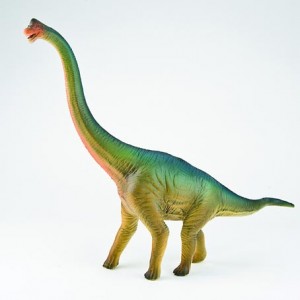
Brachiosaurus replica (Bullyland of Germany)
Picture credit: Everything Dinosaur
To view the Museum Line range of models from Bullyland: Bullyland Museum Line Models.
The fossil area is approximately half a mile in diameter and probably represents a sandbar deposit upon which all these organic remains came to rest. Whether this marks a single flood event or a gradual build up of debris in one area over a number of years has yet to be determined. One thing is for sure, this new site will help cement the Morrison Formation as one of the most important Mesozoic sites of all and provide fresh insight into well-known dinosaurs, but relatively poorly researched animals such as the North American brachiosaurids.
“We will be able to take a look at old bones with new eyes and new techniques,” Bonnan commented. “In the old days they looked for the best specimens for display. What we tend to be interested in nowadays when you have a log jam is what it can tell you about the flow of the river system and about the ancient environment.”
It is sometimes difficult for the public to appreciate how little is still known about famous dinosaurs such as Diplodocus and Brachiosaurus for example. Although scientific techniques have improved and new fossils found, there is still so much more to learn about these amazing creatures. A point that is all too often overlooked when the likes of “Walking with Dinosaurs” a ground breaking BBC TV documentary series featured the animals of the Morrison Formation in episode two of the series -“Time of the Titans”.


